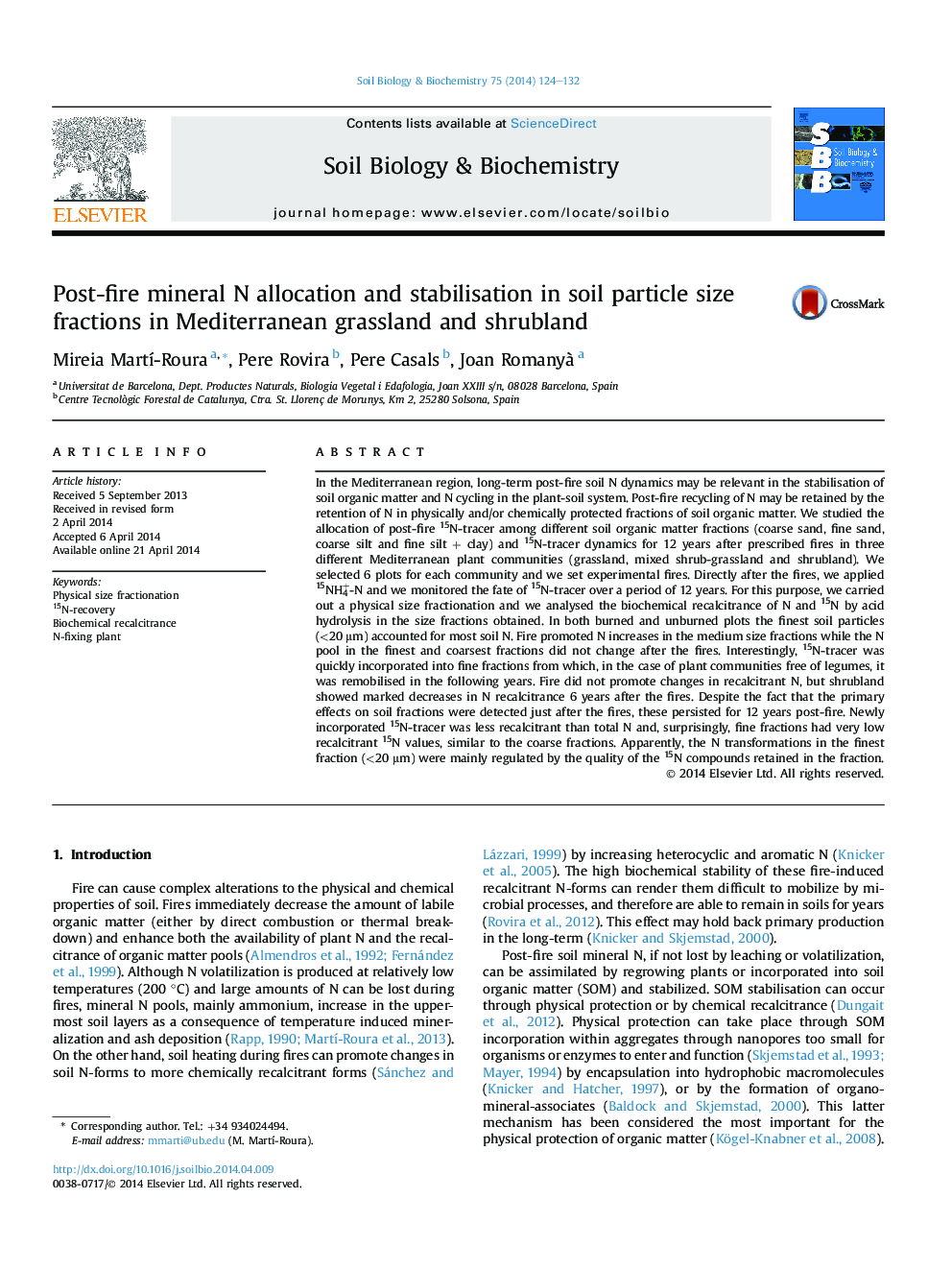| کد مقاله | کد نشریه | سال انتشار | مقاله انگلیسی | نسخه تمام متن |
|---|---|---|---|---|
| 8364718 | 1542609 | 2014 | 9 صفحه PDF | دانلود رایگان |
عنوان انگلیسی مقاله ISI
Post-fire mineral N allocation and stabilisation in soil particle size fractions in Mediterranean grassland and shrubland
ترجمه فارسی عنوان
تخصیص و تثبیت مواد معدنی پس از آتش در قطرات ذرات خاک در مزرعه و درختچه های مدیترانه ای
دانلود مقاله + سفارش ترجمه
دانلود مقاله ISI انگلیسی
رایگان برای ایرانیان
موضوعات مرتبط
علوم زیستی و بیوفناوری
علوم کشاورزی و بیولوژیک
دانش خاک شناسی
چکیده انگلیسی
In the Mediterranean region, long-term post-fire soil N dynamics may be relevant in the stabilisation of soil organic matter and N cycling in the plant-soil system. Post-fire recycling of N may be retained by the retention of N in physically and/or chemically protected fractions of soil organic matter. We studied the allocation of post-fire 15N-tracer among different soil organic matter fractions (coarse sand, fine sand, coarse silt and fine silt + clay) and 15N-tracer dynamics for 12 years after prescribed fires in three different Mediterranean plant communities (grassland, mixed shrub-grassland and shrubland). We selected 6 plots for each community and we set experimental fires. Directly after the fires, we applied 15NH4+-N and we monitored the fate of 15N-tracer over a period of 12 years. For this purpose, we carried out a physical size fractionation and we analysed the biochemical recalcitrance of N and 15N by acid hydrolysis in the size fractions obtained. In both burned and unburned plots the finest soil particles (<20 μm) accounted for most soil N. Fire promoted N increases in the medium size fractions while the N pool in the finest and coarsest fractions did not change after the fires. Interestingly, 15N-tracer was quickly incorporated into fine fractions from which, in the case of plant communities free of legumes, it was remobilised in the following years. Fire did not promote changes in recalcitrant N, but shrubland showed marked decreases in N recalcitrance 6 years after the fires. Despite the fact that the primary effects on soil fractions were detected just after the fires, these persisted for 12 years post-fire. Newly incorporated 15N-tracer was less recalcitrant than total N and, surprisingly, fine fractions had very low recalcitrant 15N values, similar to the coarse fractions. Apparently, the N transformations in the finest fraction (<20 μm) were mainly regulated by the quality of the 15N compounds retained in the fraction.
ناشر
Database: Elsevier - ScienceDirect (ساینس دایرکت)
Journal: Soil Biology and Biochemistry - Volume 75, August 2014, Pages 124-132
Journal: Soil Biology and Biochemistry - Volume 75, August 2014, Pages 124-132
نویسندگان
Mireia MartÃ-Roura, Pere Rovira, Pere Casals, Joan Romanyà ,
